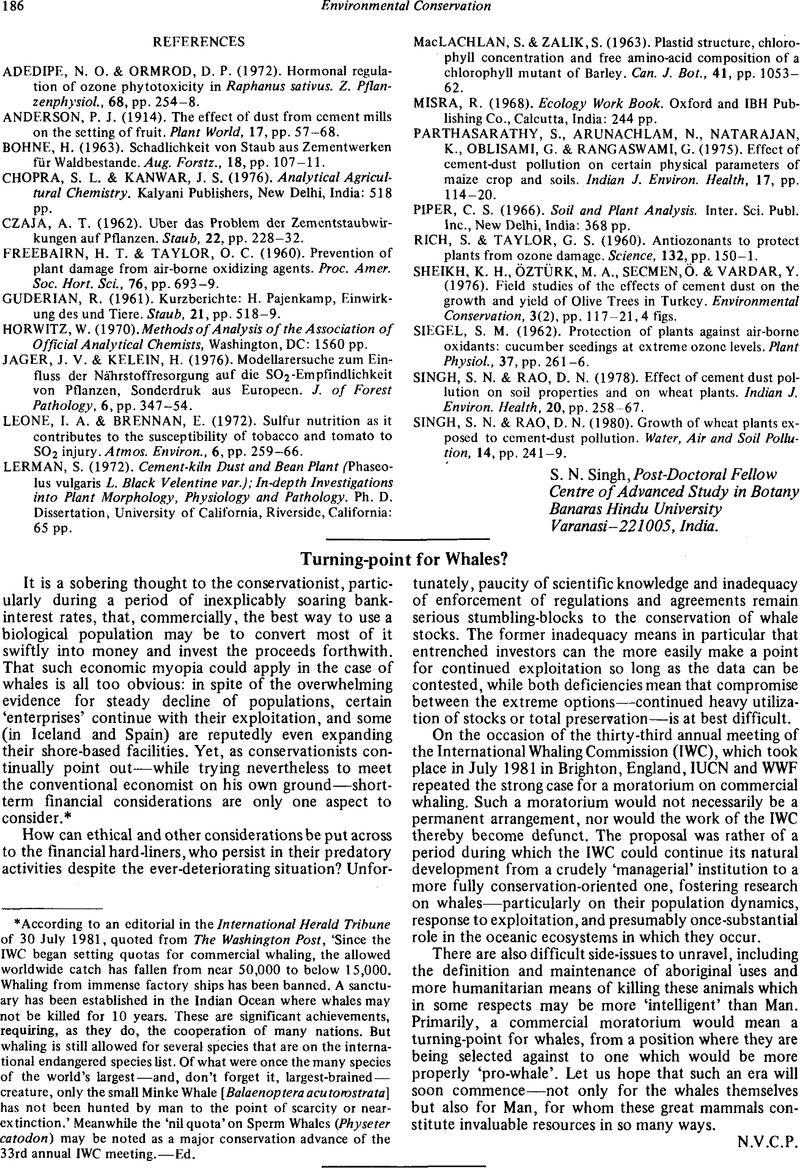No CrossRef data available.
Article contents
Abstract

- Type
- Short Communications: Reports, Comments, News, Notes
- Information
- Copyright
- Copyright © Foundation for Environmental Conservation 1981
References
* According to an editorial in the International Herald Tribune of 30 July 1981, quoted from The Washington Post, ';Since the IWC began setting quotas for commercial whaling, the allowed worldwide catch has fallen from near 50,000 to below 15,000. Whaling from immense factory ships has been banned. A sanctuary has been established in the Indian Ocean where whales may not be killed for 10 years. These are significant achievements, requiring, as they do, the cooperation of many nations. But whaling is still allowed for several species that are on the international endangered species list. Of what were once the many species of the world's largest—and, don't forget it, largest-brained—creature, only the small Minke Whale [Balaenoptera acutorostrata] has not been hunted by man to the point of scarcity or near-extinction.' Meanwhile the ‘nil quota’ on Sperm Whales (Physeter catodon) may be noted as a major conservation advance of the 33rd annual IWC meeting.—Ed.




